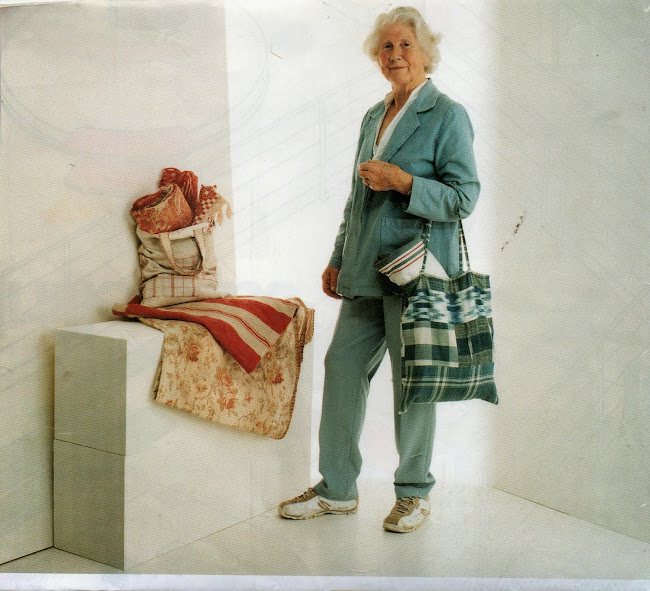I used to deal in country antiques and folk art and tools, supplying my stall at Little Chelsea and also a gallery nearby. One day I took a nice wooden object which was rather mushroom in shape in golden sycamore wood, made with a handle and a big flat saucer. I had thought it was to do with butter-making and used to press the salt in, and extract the water. I sold it to a young lady for a reasonable price and after the Fair she couldn't resist coming up to me and saying "do you know what you have just sold me It's a slickenstone for smoothing linen!," Of course I was quite miffed to have missed this, especially as I was dealing in linen and should have known about the different 'tools' used in its care. I looked up slickenstones in my copy of the wonderful reference book TREEN by Pinto. There I found lots of info. and read that these tools were used before (and after) irons were invented and were completely flat on the base which was used to polish and smooth the linen, made of wood, glass or metal and quite rare to find. I think this process is known as calendering and what I had found was the home-made version for the process. If you go to Ireland, you can see linen being hammered and pummeled in one of the mills, smoothing the surface and binding the tiny hairs of the fibres into each other, giving the fabric great strength and absorbency.
Sometime later I visited Marlborough market and there I found a strange object made of dark green glass, rather like a mushroom, found by a boy in a local stream. I bought it for a few shillings as a 'glass paperweight', took it home and eventually sold it to a real collector, who told me that many of these objects had been found in the marshes of Holland when they dug the dykes and my 'stone' had great age and was a most interesting relic of a very primitive kind. The Netherlands had a great reputation for their clean water and grassy banks for drying the linen - and in the 18thC the French Royal Palaces sent their laundry there by coach for the whitest wash!
I now have another sycamore slickenstone in my laundry tool collection which reminds me to do my homework more thoroughly next time I FIND A MYSTERY OBJECT.
I also have a super- large posser or washing plunging tool for pushing the soapy water through the wet laundry, made in Wolverhampton, of copper, and a Victorian clothes line prop, a neat contraption of two sliding staves bound with leather, and fixed with little pegs for different heights. In the days when there were no commercial laundries, every large household had a lot of sturdy equipment for dealing with the large amounts of washing, and really large establishments had buildings set aside for the work and employed special staff.
Sometime later I visited Marlborough market and there I found a strange object made of dark green glass, rather like a mushroom, found by a boy in a local stream. I bought it for a few shillings as a 'glass paperweight', took it home and eventually sold it to a real collector, who told me that many of these objects had been found in the marshes of Holland when they dug the dykes and my 'stone' had great age and was a most interesting relic of a very primitive kind. The Netherlands had a great reputation for their clean water and grassy banks for drying the linen - and in the 18thC the French Royal Palaces sent their laundry there by coach for the whitest wash!
I now have another sycamore slickenstone in my laundry tool collection which reminds me to do my homework more thoroughly next time I FIND A MYSTERY OBJECT.
I also have a super- large posser or washing plunging tool for pushing the soapy water through the wet laundry, made in Wolverhampton, of copper, and a Victorian clothes line prop, a neat contraption of two sliding staves bound with leather, and fixed with little pegs for different heights. In the days when there were no commercial laundries, every large household had a lot of sturdy equipment for dealing with the large amounts of washing, and really large establishments had buildings set aside for the work and employed special staff.



No comments:
Post a Comment